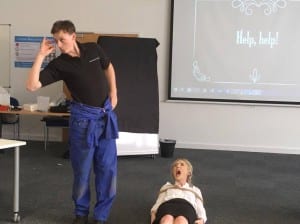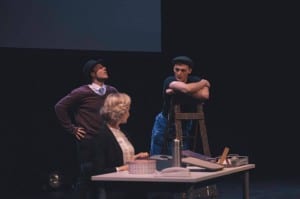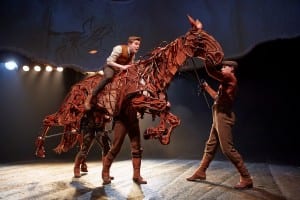Our debut show has finally come to an end. The months of hard work to make Kalopsia was an inspiring one; the process was a struggle, yet one which brought us closer as a company and stronger as an ensemble. From our initial ideas of love, to the final product of individuality and delusions, I believed we stayed true to our company’s ethos of showing what it means to be human and discovering what shapes our identity.
As our identity as a company has been shaped, so to have we in our individual job roles. Our journey has helped us discover our strengths as performers, our roles as company members, and my personal capabilities as a Movement Choreographer. I have discovered where my passions lie – in showing true connections between characters and allowing choreography of Frantic Assembly to influence my own work.
Kalopsia came together quite splendidly; I was overjoyed to see that with the help of extra UV lighting bars provided by our Stage Manager, we were able to combine elements of Black Light Theatre and Puppetry to create a visually stunning space scene which represented limitless possibilities and gave the feeling of floating in air. I was also extremely pleased to see the progression of our actor’ physicality. After working with Sam on the exercises I had fashioned, his movement became much more fluid and less tense. Also, the silent movie actors really took on the Commedia Dell’Arte archetypes I provided to create a much more interesting physical performance.


To improve this show, I would have developed the Black Light element of the space scene further to fully hide the ensemble performers and emphasise the illusion of floating. With the right lighting technology and having the ensemble cover all skin with black clothing, I would have worked on making the cast fully invisible but for the UV stars and the space man, as this would have made the lifts much more magical as Sam would truly look like he is flying. Analysing where I could improve has set me up for higher aspirations in next projects, and from my experiences creating Kalopsia, I now have higher targets set regarding my choreographic ability which I am ambitious to develop and eager to progress.
Howard Rees-Jones, G. (2017) Kalopsia. Lincoln: George Howard Rees-Jones Media.
